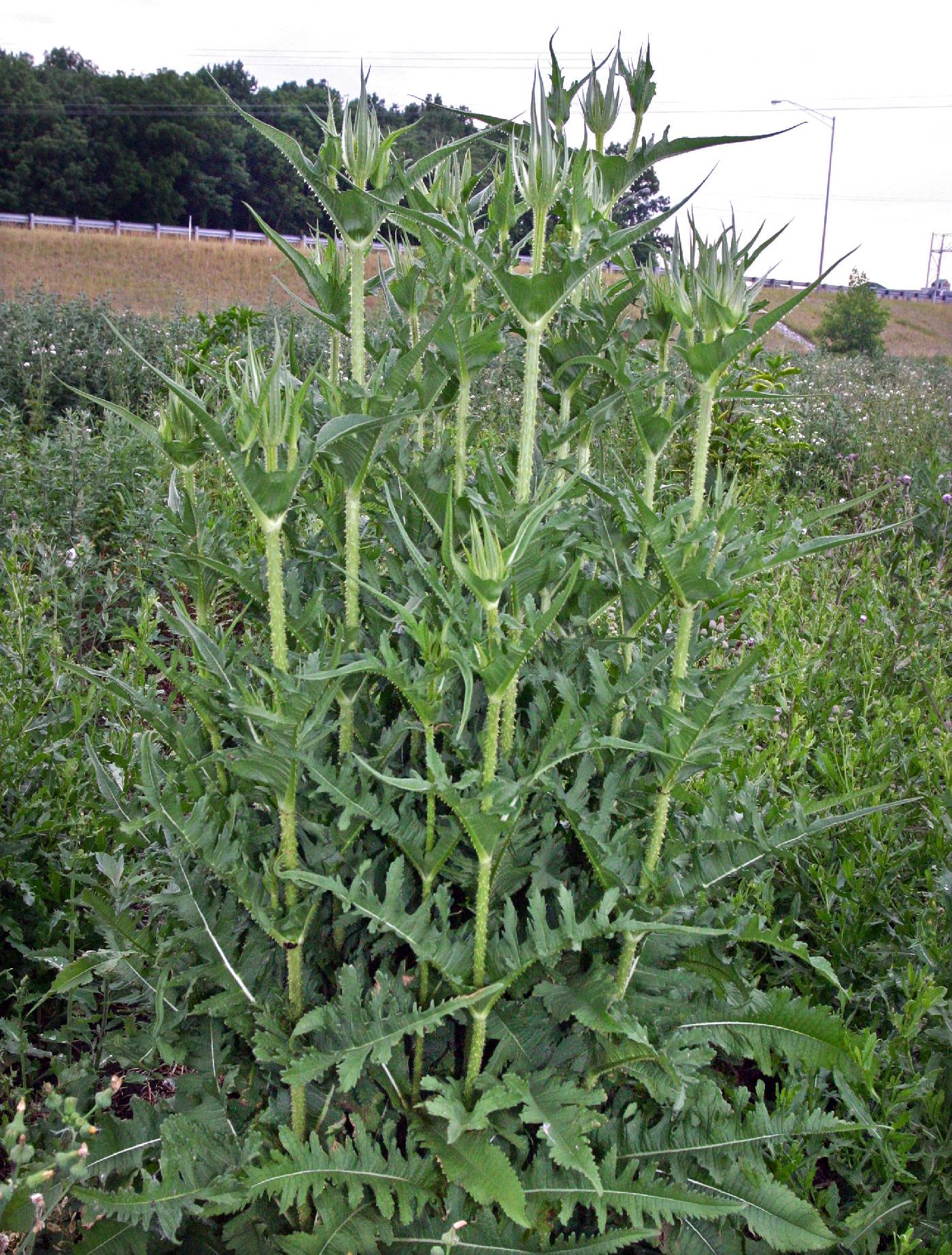
|
Family: Caprifoliaceae |
FRUIT: 4-angled, with appressed hairs and persistent calyx. PLANT: Coarse biennial or perennial herbs with prickly stems. LEAVES: large, opposite; basal leaves sessile or often petiolate; stem-leaves short-petioled or sessile, often connate. INFLORESCENCE: a dense, ovoid to cylindric head; involucral bract in 1-2 rows, elongate, erect or spreading spine-tipped; receptacular bracts ovate to lanceolate, acuminate, bearing a long, straight or hooked, spiny awn longer than the flowers. FLOWERS: involuceI4-angled, truncate or 4-toothed at the summit, with strong ribs; calyx cup-like at base, 4-lobed above; corollas tubular with 4 unequal lobes; stamens 4; stigma oblique, entire. NOTES: Ca 15 spp. native to Eur. and the Mediterranean. (Greek dipsa = thirst, because the connate leaves of some spp. hold water). Dipsacus sativus (L.) Hockey is the cultivated fuller's teasel. REFERENCES: Laferriere, Joseph E. Dipsacaceae. 1994. J. Ariz. - Nev. Acad. Sci. Volume 27, 201-202. Cal short, 4-angled or 4-lobed, hairy; cor 4-lobed, the marginal ones not enlarged; involucel 4-angled, truncate or 4-toothed at the top; involucral bracts slender, often elongate; receptacular bracts ovate or lanceolate, acuminate into an awn surpassing the fls; tall biennial or perennial herbs, little branched, with prickly stems, large, sessile or even connate lvs, and small fls in dense, ovoid to cylindric heads. 10+, Europe, w. Asia, n. Afr. Gleason, Henry A. & Cronquist, Arthur J. 1991. Manual of vascular plants of northeastern United States and adjacent Canada. lxxv + 910 pp. ©The New York Botanical Garden. All rights reserved. Used by permission. |
This project was made possible in part by the Institute of Museum and Library Services [MG-70-19-0057-19].
Powered by Symbiota



